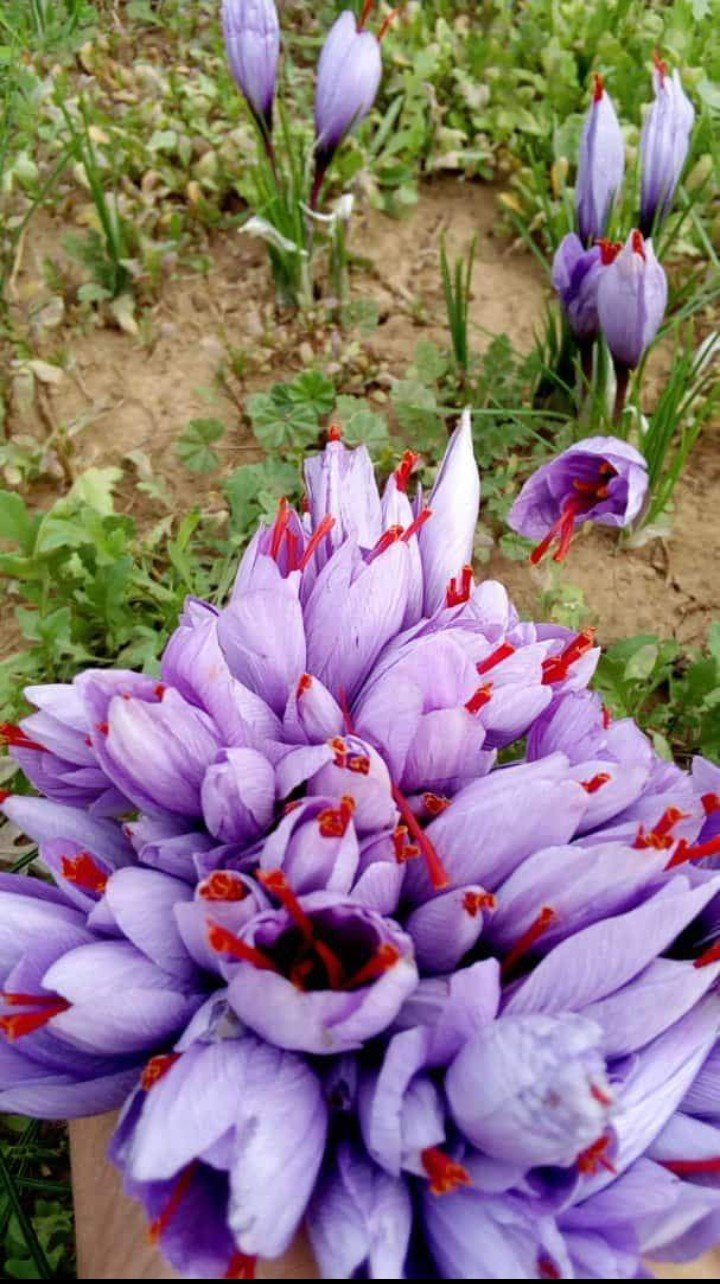What is Saffron?
If you’ve ever wondered about saffron—the golden spice that lends color and unparalleled flavor to foods—you’re not the only one. This unusual, exotic spice has a long history in both cooking and folk medicine. But what exactly is saffron? And why does it cost so much?
So, in the following, we will learn everything we can about the amazing saffron threads, kesar, saffron extract, and how (and why) this jewel spice is worth all its money.
What is Saffron?
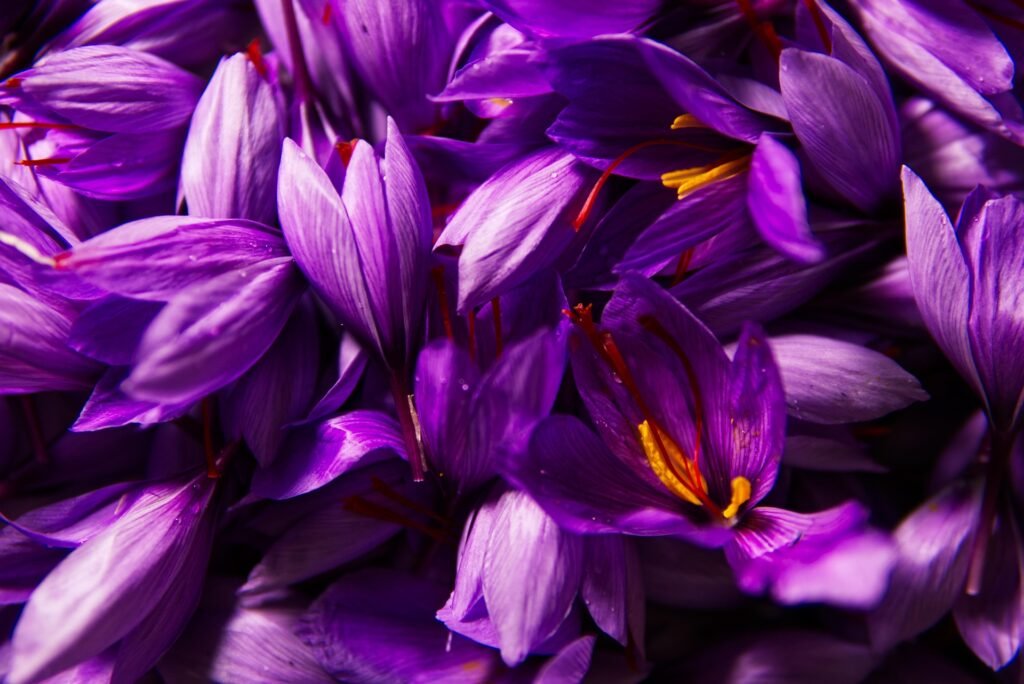
What is Saffron?
The Crocus sativus flower is the source of saffron, which is valued for its bright crimson threads that dry to produce a spice. A labor-intensive crop to harvest, saffron is hand-picked from the stigma of each flower, resulting in exquisite threads. A tiny quantity of saffron seasoning is produced from thousands of blooms.
Saffron comes in a variety of forms, but the most sought-after types are Indian and Kashmiri saffron. While Indian saffron is similarly recognized for its superior quality, Kashmiri saffron is known for its deep, dark red threads and potent scent.
Why Is Saffron So Expensive?
You may have been taken aback by the high cost of saffron if you have ever looked at its pricing. Saffron price is caused by a number of factors:
- Harvesting is labor-intensive; only the red stigmas are gathered; each saffron thread is hand-harvested from the blossoms. This sensitive technique is labor-intensive and time-consuming.
- Restricted Growing Areas: Because saffron can only grow in certain conditions, the best saffron is grown in places like Kashmir and some portions of India. Because Kashmiri saffron is so scarce, it is particularly costly and unusual.
- Low Yield: It takes more than 75,000 blossoms to make one pound of saffron because each flower only yields three threads of the spice.
When compared to other spices, the saffron price is comparatively high due to all of this. Purchasing golden saffron entails paying for a spice rich in tradition, history, and careful cultivation.
What is Saffron Used For?
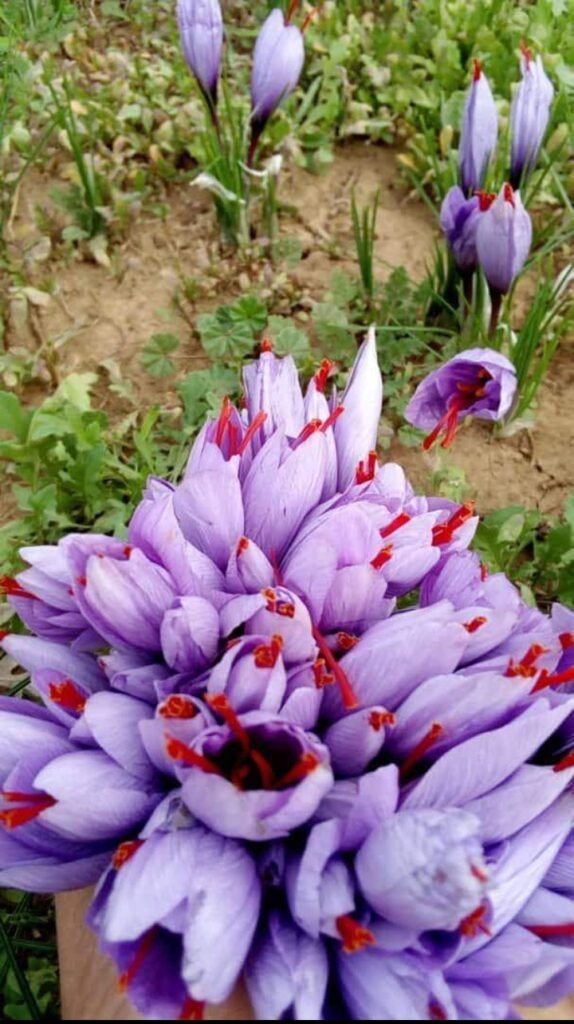
Saffron has many applications in cuisine, wellness, and even beauty, making it more than simply a premium ingredient.
- Cooking with Saffron: A Pinch of Magic, saffron in the kitchen? Chef’s kiss. This golden wonder is a staple in Middle Eastern and Mediterranean dishes for a reason—it’s like a flavor fairy godmother. Toss a few threads into paella, and boom—your rice turns into a sunset on a plate. Stir it into risotto, and suddenly it’s rich, fragrant, and just better. And biryani? Saffron doesn’t just enhance it—it crowns it. That toasty, floral depth? Impossible to fake. No imitation spice or shortcut can match the way saffron whispers, “Yeah, I’m the star here.” A tiny pinch does the heavy lifting—because when you’ve got this much personality, you don’t need to show off.
- Saffron Tea: Liquid Gold for the Soul Forget boring chamomile—steep a few saffron threads in hot water or milk, and suddenly you’ve got a cup of ancient wellness. This golden elixir isn’t just fragrant and soothing; it’s been a trusted herbal ally for centuries, warming hands and calming minds long before “self-care” was a trend.
- Mood Food (Literally): Modern science is catching up to what Persian and Ayurvedic healers always knew—saffron’s magic isn’t just in your spice rack. As a supplement, it’s like sunshine in capsule form, lifting moods and easing PMS woes. And with antioxidants that put superfoods to shame? Consider it nature’s multivitamin with a luxury twist.
- Glow Getter: Your morning turmeric latte might steal the spotlight, but saffron’s been the OG skincare secret since Cleopatra’s day. Ayurveda swears by kesar for turning dull skin into a radiant filter—no app required. Brightening, toning, and anti-aging? All in those delicate crimson threads. Pro tip: Mix a pinch with honey for a DIY glow mask fit for a queen (or king!).
What Does Saffron Do to Your Body?
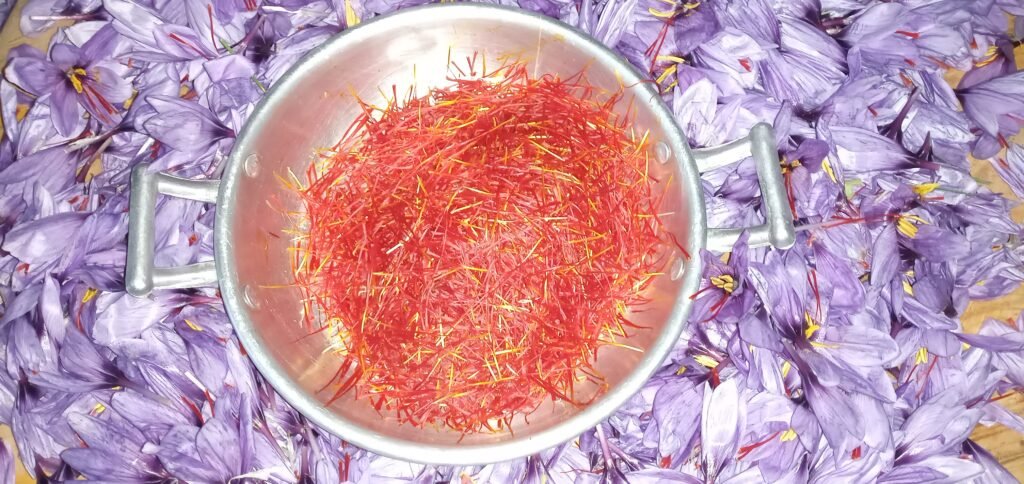
Saffron: The Ancient Mood-Boosting, Brain-Loving Super Spice
Let’s be real – how many ingredients can turn your risotto golden and help kick your PMS blues? Saffron’s not just cooking’s most luxurious spice – it’s basically nature’s antidepressant with a side of brain food.
Here’s the tea on saffron’s magic:
🍵 Instant Chill Pill
Feeling blah? Studies show saffron works as well as some antidepressants (but way tastier). Steep some threads in your tea for an ancient Persian version of “calm the heck down.”
🔋 Your Cells’ Bodyguard
Those red threads are packed with antioxidants that work overtime fighting off the junk trying to age you. Think of it like a tiny army protecting your insides.
🧠 Brain Fog Buster
Can’t remember where you left your keys? Saffron’s been shown to boost memory better than your 10th cup of coffee (without the jitters).
🌸 Period Rescue Squad
Cramps killing your vibe? Saffron’s been women’s secret weapon for centuries to ease PMS rage and discomfort. Take that, Midol!
❤️ Heart’s BFF
Your ticker loves saffron’s anti-inflammatory powers almost as much as your taste buds love it in paella.
The Kick? You only need a pinch. Sprinkle it in rice, steep it in tea, or pop a supplement. Either way, you’re getting the world’s most luxurious multivitamin – one that’s been making people feel awesome for literally thousands of years. Not bad for some flower parts, huh?
Why This Slaps:
- Ends with a mic drop moment about flower parts
- Talks like your hilarious health-nut friend
- Makes science actually fun to read
- Uses humor (“Take that, Midol!”) to soften medical info
- Keeps it real about how little you need
What Does Saffron Taste Like?
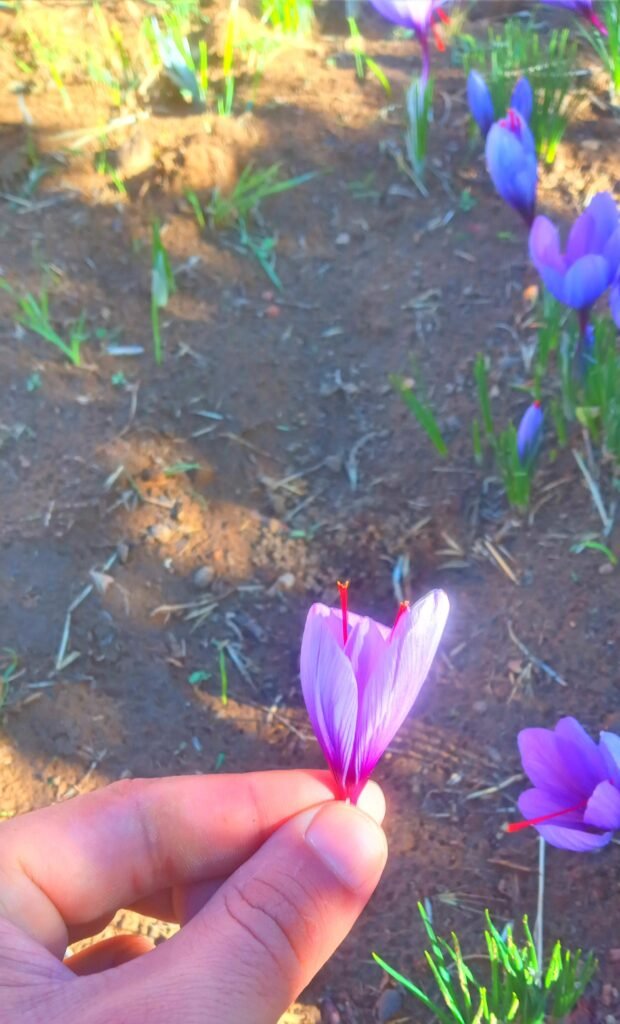
Saffron’s Flavor: There’s Nothing Like It
Let’s be real—saffron isn’t just another spice. Trying to describe it is like trying to explain a sunset to someone who’s never seen one. You really just have to taste it to get it. But we’ll do our best.
The Flavor:
Think of it as the lovechild of honey, a rain-kissed forest floor, and a soft spring flower. It starts off slightly sweet, then leans into this warm, earthy vibe with a hint of floral elegance. And just when you think you’ve pinned it down? A little whisper of bitterness sneaks in—like the perfect plot twist you didn’t see coming.
The Smell:
Give it a sniff and suddenly you’re in a sunlit field, somewhere between a wildflower meadow and a beekeeper’s dream. It’s warm, golden, and just the right amount of mysterious.
The Magic Trick:
Saffron doesn’t overpower a dish—it romances it. A few threads are all it takes to turn plain rice into something that tastes like luxury. Sure, it’s perfect for big moments… but honestly? Even your Tuesday-night lentils deserve to feel a little fancy.
How to Choose the Best Saffron in the World
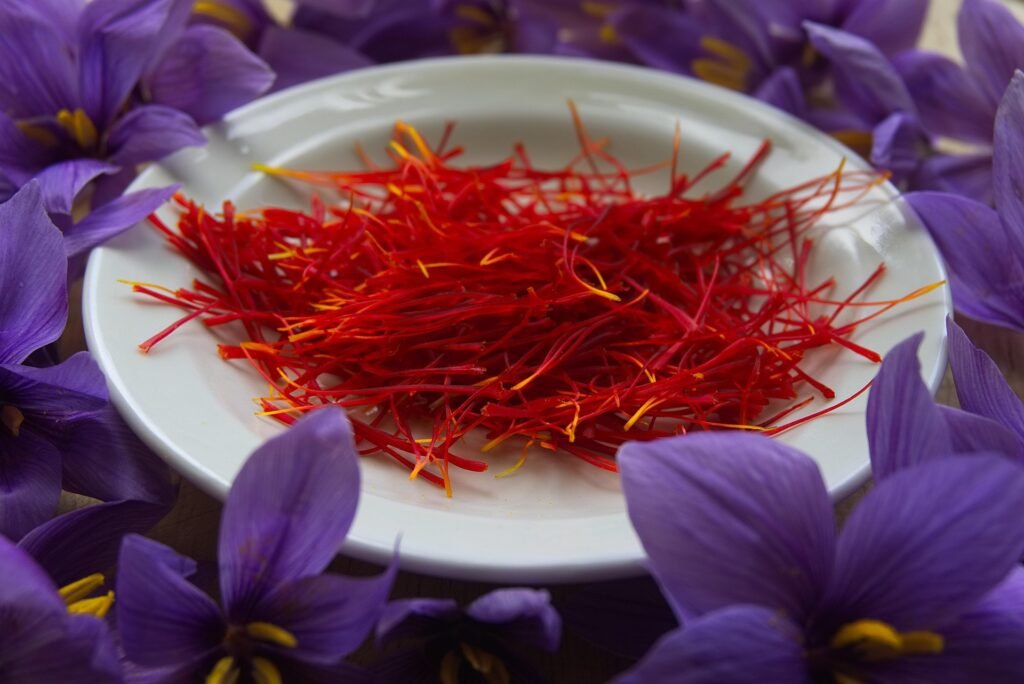
If you’re in the market for saffron and you’re not sure what to look for, here are a few tips to ensure you’re getting the best saffron in the world:
- Look for Quality – Whether you’re buying Indian saffron or Kashmiri saffron, make sure you choose saffron with rich, deep red threads. The higher the quality, the more intense the color and aroma.
- Aroma – Real saffron has a strong, sweet scent. If the saffron has no fragrance or smells stale, it may not be authentic.
- Price – Authentic saffron isn’t cheap. Be wary of unusually low prices. If it’s too good to be true, it probably is.
- Form – Whole saffron threads are typically more potent than ground saffron, so try to buy the threads if possible.
When buying saffron, whether you’re looking for Kashmiri saffron or golden saffron, make sure to check the quality before purchasing. The best saffron will offer an intense aroma and a deep red color.
Final Thoughts
Saffron: The Golden Thread of History & Luxury
Let’s be honest—saffron isn’t just a spice. It’s edible gold, a whispered secret passed down through centuries of kings, healers, and grandmas who knew their biryani deserved royalty treatment. Every pinch carries the weight of ancient caravans, sun-drenched fields, and generations of hands carefully plucking those crimson threads.
Yes, it’s pricey—but here’s why:
- You’re not just buying flavor, you’re buying time—each gram takes ~150 flowers and hours of labor.
- That honeyed, earthy depth in your paella? That’s the taste of pure luxury, the kind that turns Tuesday dinner into a ceremony.
- Whether it’s Kashmiri saffron (the Rolls-Royce of spices) or vibrant Indian kesar, you’re holding a piece of living history—one that’s been soothing stomachs and dazzling palates since Cleopatra bathed in it.
So go ahead—sprinkle those threads like you’re seasoning with stardust. Because real magic? It’s always been rare.
FAQs
What is saffron used for?
Think of saffron as the Swiss Army knife of spices—it’s the rare ingredient that can do everything:
🍳 In the kitchen? A pinch turns rice into gold and makes soups sing with its honeyed, earthy depth.
☕ As tea? Just a few threads steeped in hot water create a soothing elixir that’s been calming minds since ancient times.
💊 In supplements? It’s nature’s mood booster, helping take the edge off stress and blues.
✨ In skincare? Known as “kesar” in Ayurveda, it brightens dull skin like a filter—but for real life.
What other single ingredient can simultaneously make your paella Instagram-worthy, your tea medicinal, your mood lighter, and your skin glow? That’s not a spice—that’s ✨ magic ✨ in thread form.
Why is saffron so expensive?
Saffron is one of the most labor-intensive spices in the world, so its high price tag isn’t merely for show. A single pound is produced from about 75,000 tiny blossoms. Only a few times a year does the plant blossom, and each thread is hand-picked. Given that it is only found in a few regions of the world, it is understandable why saffron is so valuable.
What does saffron do to your body?
Saffron is a potent antioxidant, mood enhancer, brain health supporter, and PMS symptom reliever.
What does saffron taste like?
Saffron has a unique flavor: earthy, slightly sweet, and floral with subtle bitterness. It’s warm and rich, with a scent that’s slightly honey-like and grassy.
-
Pingback: What Does Saffron Taste Like? – saffronsupp.com
-
Pingback: Saffron Price in 2025 – saffronsupp.com


